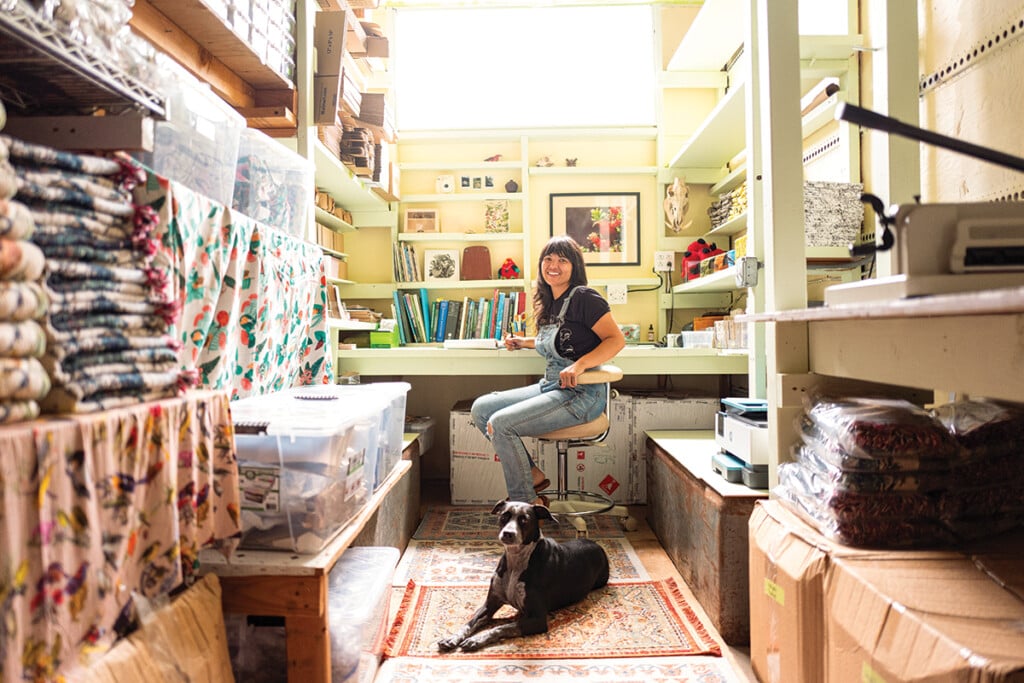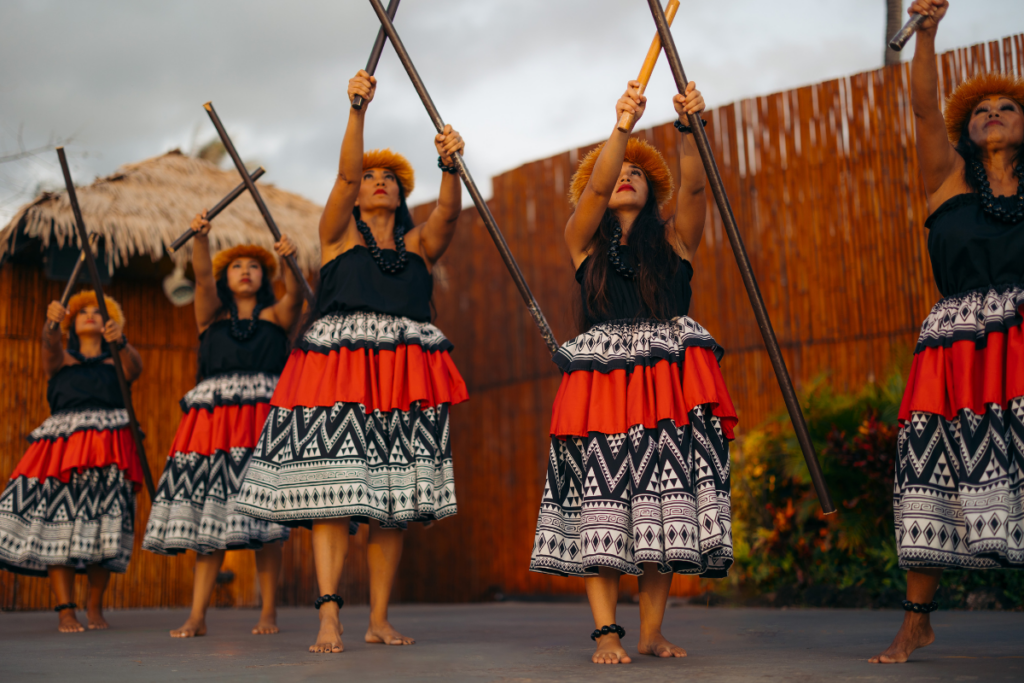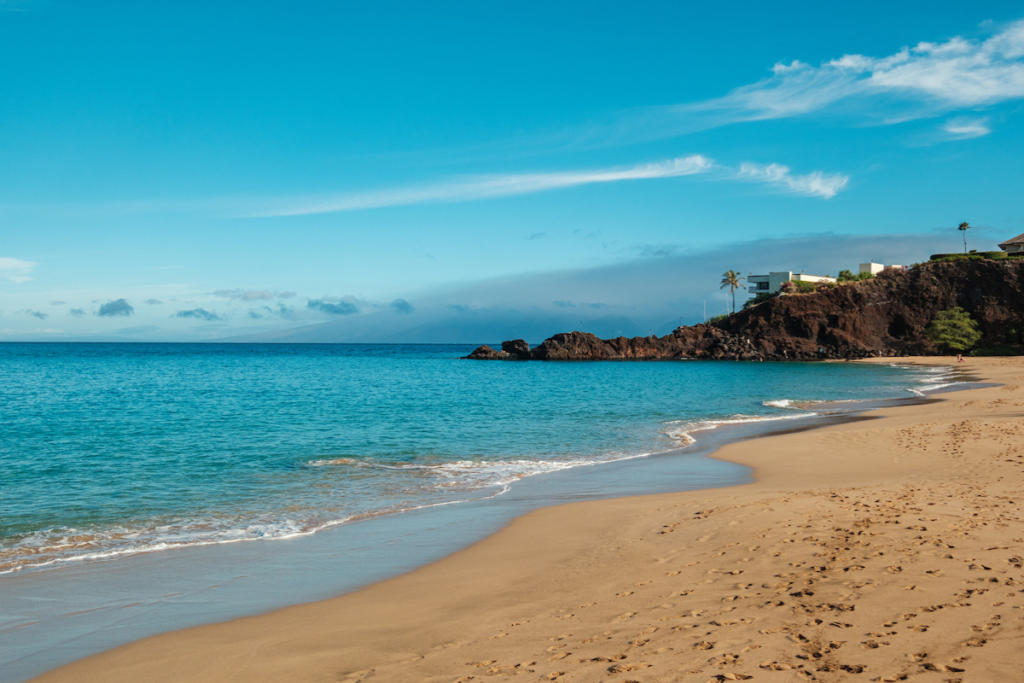This Hilo-Based Designer Focuses Products on Native Hawaiian Biodiversity
Started by eco-conservationist Danya Weber, Laulima brings the native flora and fauna of Hawai‘i right into your home.

This story is part of our Meet the Makers feature, which was published in our Fall 2023 issue. In Hawai‘i, we always try to support local. Whether we’re buying produce from the nearby farmers markets or shopping at the mom-and-pop boutique down the street, it means a lot for us to give back to our Island economy. So check out some of these Hawai‘i makers who have started their own businesses from scratch and make products that perfectly encapsulate everything we love about the Islands.
Laulima. In ‘olelo Hawai‘i (Hawaiian language) it means “many hands.” Figuratively, it denotes that change requires the joint action and support of a community of individuals. And Danya Weber, founder of the fashion and home goods brand Laulima, is educating people about the many endangered native plants and animals in Hawai‘i in hopes that together, they can bring change.
“Laulima is a mission to connect the people of Hawai‘i with the native flora and animals who have been here well before us and that we now share our home with,” Weber says.
The local business that she started in 2017 sells apparel for men and women that feature designs of endangered flora and fauna, created by local artists. The designs also appear on household products—pillows, throw blankets and more—as well as on pins, patches and stickers.
View this post on Instagram
Prior to her entrepreneurial journey, Weber interned with the Kaua‘i Forest Bird Recovery Project. It was here, she says, that she became enamored with Hawai‘i’s native ecosystem. Working in remote areas untouched by human development, where native species flourish, she saw it as beautiful, unique and special. But when Weber tried to communicate what she was experiencing with her friends and family, she noticed a disconnect.
“They just didn’t really understand what I was trying to say; they just had no concept of what a native forest is, what a native bird is,” says Weber. “And so I realized that using artwork and social media was a great way to inform people about native species.”
It was a local art show that gave Weber the final push to start her business. During the show, O‘ahu and Kaua‘i artists shared their ideas on conservation and endangered species through art.
“There was a really good turnout with the public; I had family come and there was just like awesome support for the whole thing,” says Weber. “So I was like, OK, it’s not just us conservationists who are interested in this. People would be interested, but they just don’t know about native birds and native plants. So if we like bring it to the forefront and share them with the public we can definitely get people interested in wanting to protect them like we do.”
Thus, Laulima was born. It started small, with pins, stickers and field guides. Weber produced almost all of the art and designs for her products for the first three years; now, about 50% of the art featured on Laulima’s impressive array of products are collaborations with an eclectic mix of local creators, including self-taught digital artist Keanu Wilson; tattoo artist Kai Smart; and independent ornithologist, illustrator, author and musician H. Douglass Pratt.

Though she grew up in San Francisco, spent summers in Hawaiʻi. She grew up appreciating the uniqueness of Hawaiʻi’s flora and fauna.
Photo: Aaron K. Yoshino
While her products have expanded and the art has become more diversified, the mission of Laulima has stayed the same since 2017. Ten percent of all profits made by Laulima are donated to a handful of conservation organizations, including the Maui Forest Bird Recovery Project, the Three Mountain Alliance on Hawai‘i Island and the Kaua‘i Forest Bird Recovery Project—as well as more than a dozen other nonprofits. And new species of endangered plants and animals are being introduced to the Laulima line of products, sometimes at a moment’s notice.
View this post on Instagram
“As a business owner, I’m not great at planning what animal or plant to feature next,” says Weber. “When it comes to designs, it’s very spur of the moment and related to what’s happening with the local conservation climate. For example, if there’s a bird species in particular that might go extinct soon, we focus on those birds and make products that raise awareness about them. It’s very organic, and I follow my gut.”
And it’s comforting to know that, whether you’re getting a Theridion grallator (aka the Hawaiian happy-face spider) shirt, an ‘i‘iwi (scarlet honeycreeper) plush keychain, or something else entirely, your item was likely produced in the Islands. While not all Laulima products are made locally, most are—and the business uses Hawai‘i screen printers and embroiderers for its alohawear and home and living products.
Instead of being on the ground floor of nature conservancy, like she was with the Kaua‘i Forest Bird Recovery Project, Weber says she sees herself now as more of a conservation facilitator. And with such a broad audience at Laulima, she’s put herself in a position where she can inspire others to make change. “I would just love for native plants and animals to be reestablished in modern culture because they’ve been so forgotten about. They’ve been lost to time, development and modernization,” says Weber. “So I would love to bring them back into our everyday lives, through our shirts and pillowcases and products. And that doesn’t mean that we’ll get to the point where they’re living in our backyards, but at least we collectively can understand that they were once here where we were.”
To learn more about Laulima , visit laulima.store.
This story was originally published in the Fall 2023 issue of HAWAIʻI Magazine. Get a copy here.


